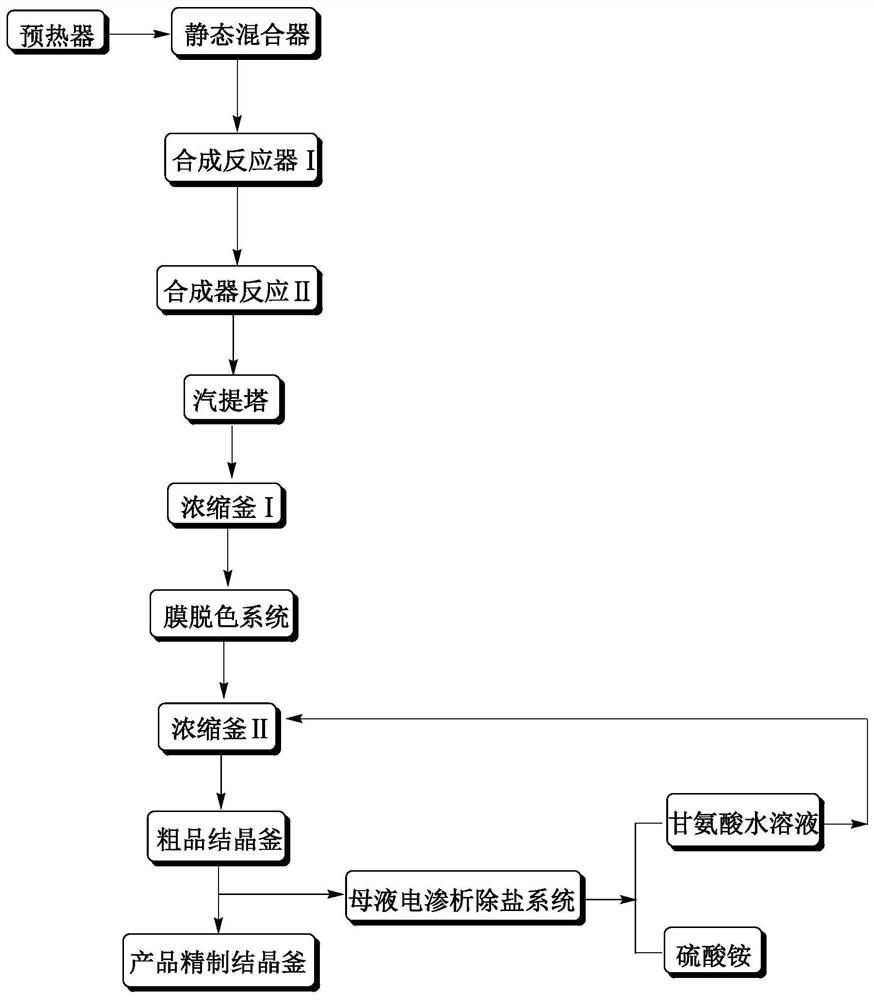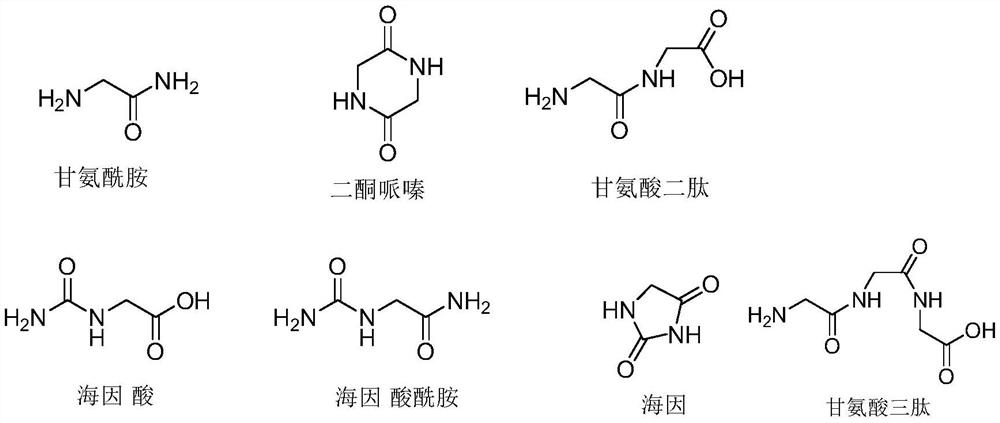Production method of feed-grade and food-grade glycine and device for implementing production method
A glycine, food-grade technology, used in chemical instruments and methods, preparation of organic compounds, organic chemistry, etc., can solve the problems of high refining cost, increased by-products, and high energy consumption for crystallization, and achieves high operational flexibility and efficient conversion. The effect of high yield, high yield and high purity
- Summary
- Abstract
- Description
- Claims
- Application Information
AI Technical Summary
Problems solved by technology
Method used
Image
Examples
Embodiment 1
[0169] 290.91 grams of ammonium carbonate with a purity of 99.0% and 750 grams of deionized water were added to a 1000ml pressure-resistant zirconium-lined reactor with a feeding and stirring device, and the temperature was raised to 65° C. to obtain an aqueous solution of ammonium carbonate. Squeeze 142.5 grams (50 ℃, pH=3.0) of 40wt% hydroxyacetonitrile aqueous solution preheated in advance from the feed port of the reactor with a booster pump, the mol ratio of hydroxyacetonitrile, ammonium carbonate and water is 1:3:46.4, During the process of adding the aqueous solution of hydroxyacetonitrile, the reactor was heated to 100°C for reaction, and the stirring speed was 120r / min, the speed of adding the aqueous solution of hydroxyacetonitrile was 8.0g / min, and the liquid level of the reaction material was 96%. After the addition of the hydroxyacetonitrile aqueous solution was completed, the reactor was closed, and the temperature was raised to 150° C. immediately, the pressure i...
Embodiment 2
[0175] 290.91 grams of ammonium carbonate with a purity of 99.0% and 869.3 grams of deionized water were added to a 1500ml pressure-resistant zirconium-lined reactor with a feeding and stirring device, and the temperature was raised to 50° C. to obtain an aqueous solution of ammonium carbonate. Squeeze 87.7 grams (70 ℃, pH=2.0) of the 65wt% hydroxyacetonitrile aqueous solution that preheats beforehand with booster pump from the inlet of reactor, the mol ratio of hydroxyacetonitrile, ammonium carbonate and water is 1:3:50, During the process of adding the aqueous solution of hydroxyacetonitrile, the temperature of the reactor was raised to 135° C., and the stirring speed was 120 r / min. The rate of adding the aqueous solution of hydroxyacetonitrile was 8.0 g / min, and the liquid level of the reaction material was 76%. After the addition of the hydroxyacetonitrile aqueous solution was completed, the reactor was closed, and the temperature was raised to 150° C. immediately, the pres...
Embodiment 3
[0179] 232.73 grams of ammonium carbonate with a purity of 99.0% and 602.4 grams of deionized water were added to a 1000ml pressure-resistant zirconium-lined reactor with a feeding and stirring device, and the temperature was raised to 65° C. to obtain an aqueous solution of ammonium carbonate. Squeeze 91.2 grams (60 ℃, pH=4.0) of the 50wt% hydroxyacetonitrile aqueous solution that preheats beforehand with pressurized pump from the inlet of reactor, the mol ratio of hydroxyacetonitrile, ammonium carbonate and water is 1:3:45, During the process of adding the aqueous solution of hydroxyacetonitrile, the temperature of the reactor was raised to 120° C., and the stirring speed was 150 r / min. The rate of adding the aqueous solution of hydroxyacetonitrile was 5.0 g / min, and the liquid level of the reaction material was 85%. After the addition of the aqueous solution of hydroxyacetonitrile was completed, the reactor was closed, and the temperature was raised to 152° C. immediately, t...
PUM
 Login to View More
Login to View More Abstract
Description
Claims
Application Information
 Login to View More
Login to View More - R&D Engineer
- R&D Manager
- IP Professional
- Industry Leading Data Capabilities
- Powerful AI technology
- Patent DNA Extraction
Browse by: Latest US Patents, China's latest patents, Technical Efficacy Thesaurus, Application Domain, Technology Topic, Popular Technical Reports.
© 2024 PatSnap. All rights reserved.Legal|Privacy policy|Modern Slavery Act Transparency Statement|Sitemap|About US| Contact US: help@patsnap.com










